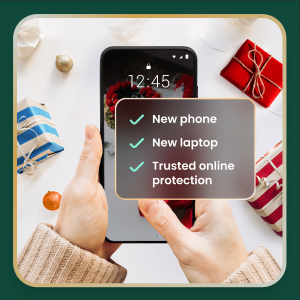If you’ve been watching the news, you’ve probably seen the headlines out of Paris: one of the most audacious heists in decades took place at the Louvre, where thieves made off with centuries-old crown jewels worth tens of millions of dollars.
But amid the cinematic drama, a quieter detail emerged that’s almost harder to believe—according to French newspaper Libération (via PC Gamer), auditors discovered that the password protecting the museum’s video surveillance system was simply “Louvre.”
While it’s not yet confirmed whether this played a direct role in the robbery, cybersecurity experts point out that weak or reused passwords remain one of the easiest ways for criminals—digital or otherwise—to get inside.
Safety Lessons You Can Learn from The Louvre
The Louvre’s cybersecurity audits, dating back to 2014, reportedly revealed a pattern of outdated software and simple passwords that hadn’t been updated in years. Subsequent reviews noted “serious shortcomings,” including security systems running on decades-old software no longer supported by developers.
That situation mirrors one of the most common security issues individuals face at home. Whether it’s an email account, a social media login, or your home Wi-Fi router, using an easy or repeated password is like leaving the front door open. Hackers don’t need to break in when they can just walk through.
As experts here at McAfee have explained, cybercriminals routinely rely on “credential stuffing” attacks, in which they test stolen passwords from one breach against other sites to see what else they can access. If you’ve used the same password for your streaming account and your online banking, it’s not hard to imagine what could go wrong.
What’s A Bad Password?
- Obvious or guessable: Anything like “password,” “123456,” or even the name of the service (“Louvre,” “Netflix,” “Chase”) can be cracked in seconds.
- Dictionary words: Real words or phrases are easier for hacking programs to guess, even when combined creatively.
- Repeated passwords: Reusing a password across multiple sites means one breach can expose everything.
- Personal details: Pet names, birthdays, and favorite bands can all be scraped from social media—making them the first thing a hacker will try.
What Makes A Strong Password
A strong password is long, complex, and unique. Cybersecurity experts recommend at least 12–16 characters that mix uppercase and lowercase letters, numbers, and symbols. A short password can be guessed in minutes; a long one can take decades to crack.
If that sounds like a lot to juggle, you’re not alone. That’s why password managers exist.
Why A Password Manager Is Your Best Guard
A password manager takes the work—and the guesswork—out of creating and remembering complex passwords. It generates random combinations that are nearly impossible to crack, then stores them securely using advanced encryption.
The added bonus? You’ll never have to reuse a password again. Even if one account is theoretically compromised in a breach, your others remain protected because each password is unique.
McAfee’s password manager also uses multi-factor authentication (MFA), meaning you’ll need at least two forms of verification before signing in—like a code sent to your phone. That extra step can stop hackers cold, even if they somehow get your password.
How to protect yourself
To keep your digital treasures safer than the Louvre’s jewels:
- Use strong, unique passwords for every account. Longer is better.
- Change passwords regularly and especially after any breach or suspicious activity.
- Turn on MFA wherever possible—it’s one of the simplest and most effective protections.
- Avoid public Wi-Fi for sensitive logins, or use a secure VPN.
- Store passwords safely with a reputable password manager instead of your browser or a notepad.
The bottom line
Reports of the Louvre’s weak password might make for an easy punchline, but the truth is that millions of people make the same mistake every day—reusing simple passwords across dozens of accounts. Strong, unique passwords (and the right tools to manage them) are still one of the most powerful defenses against data theft and identity fraud.
As scams and breaches continue to evolve, your best defense is awareness and protection that adapts just as fast. McAfee’s built-in Scam Detector, included in all core plans, automatically detects scams across text, email, and video, blocks dangerous links, and identifies deepfakes—stopping harm before it happens.













